Walking in Provence
Ivor New
|
|
Last September my wife
Jo, my brother, and I decided a couple of weeks of
leisurely walking in the autumn sunshine of Provence
would be an excellent idea. What could be better
than strolling gently from village to village with
temperatures in the low twenties with just the
exquisite countryside for company and the thought of
lunch as a distraction?
Come the event it was
not quite like that. The temperature was an
unseasonal 30+ degrees, which in sparsely wooded
limestone countryside was hotter than I care to
remember. Not surprisingly much of the walking was
replaced by sitting in the shade testing the quality
of Provençal cuisine. This was excellent, if a bit
pricy – with the extended lunches we not only blew
the budget but had to expand our belts!
We stayed in the
Luberon at Fontaine de Vaucluse. Our hotel was an
old mill but there was little to indicate this
except several water channels and a large iron
flange that was most likely part of a turbine inflow
pipe. However, the setting was idyllic and the food
good.
|
|
The
Fontaine is a very
impressive geological feature which following winter
rains provides the main drain for the aquifer
beneath the local limestone plateau and is
considered the source of the river Sorgue. At the
mouth of the Fontaine cavern the seasonal change in
water level is massive, the lowest recorded level is
22.3m below the fountain’s cill and the highest
2.73m above it. The reason for this is that there
are a multitude of smaller springs in the river’s
headwaters and the Fontaine acts as an overflow.
|
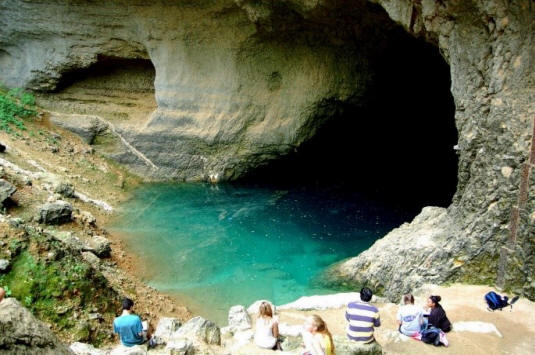 |
The number of days in a year that the water
overflows the cill varies considerably. The maximum
number of days in recent times is 198 in 1977,
following heavy winter snows, and the minimum is
only 2 days in 2007. There is no obvious trend but
the local feeling was that this could be taken as an
indicator of global warming.
Low and high water flow at the
Fontaine cavern |
|
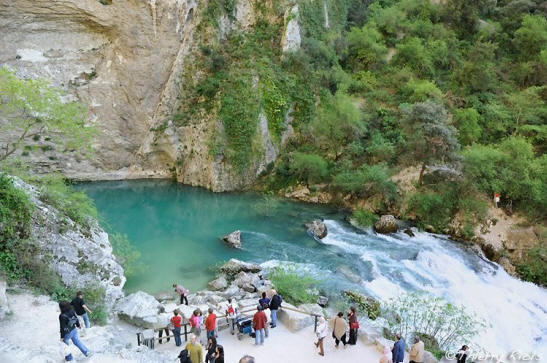
|
|
|
Now the mills bit. The Sorgue is a significant
river and with the Luberon aquifer acting as a
reservoir, a considerable flow is maintained all
year. The locals seem proud of their milling
heritage as there are water wheels and weirs up and
down the river.
|

Paper mill wheel and trip hammers
|
|
Most of these wheels are undershot and just idle
round on their shafts as the buildings they served
have long been converted to meet other needs.
In Fontaine de Vaucluse the one exception is the
paper mill which still operates in a traditional
manner but only makes small batches of specialised
paper. The most noteworthy is the manufacture of
small batches of chemically unique rag paper that is
used when producing important documents like
international treaties. While we were there the
wheel was idling round (being fed from one of the
small springs lower down the valley) and the row of
trip hammers used to pulverise the rag into its
fibres was not being operated.
|
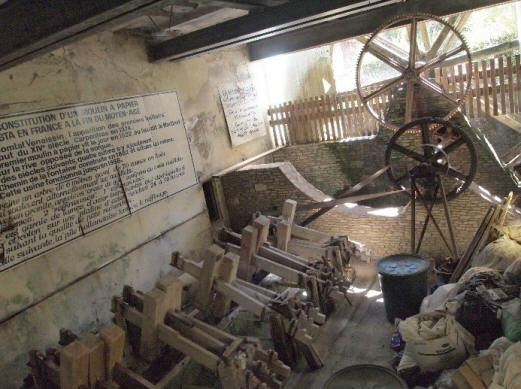 |
|
The local town is L’Isle-sur-la-Sorgue which must
once have been like a Provençal version of a Pennine
mill town. The Sorgue splits into several branches,
one of which flows beside a major road through the
town. There is a weir that diverts water into a
leat that flows in a tunnel under the road to feed
several small ponds. Each has sluice gates to
divert water to wheels, some of which are still
turning in small fenced areas in the pavement.
|

L’Isle-sur-la-Sorgue weir
|
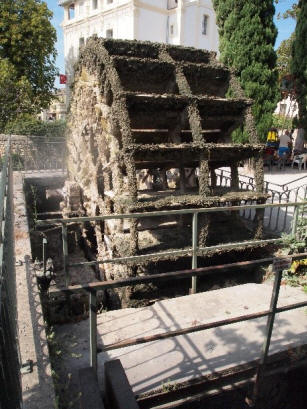
A typical road side wheel |
|
The final surprise was to find the ruin of a post
mill beside the path we were walking along on our
way to lunch. The mill consisted of a small conical
tower with a door in the base and a stone slab at
its top. It was situated in a col (which is now
largely covered in trees) and a local sign said it
was Le Petit Moulin.
The slab on top was clearly a recent addition so it
could easily be the base of a simple post mill.
When I got home I Googled ‘French post mill’ to
check its provenance and it seems that the
differences between town and country is alive and
well, as shown in the pictures!
|
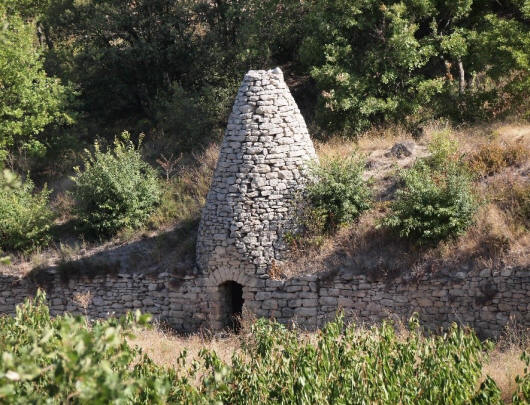
2 French style post mills, Le Petit Moulin (above)
and an up-market urban example (right) |
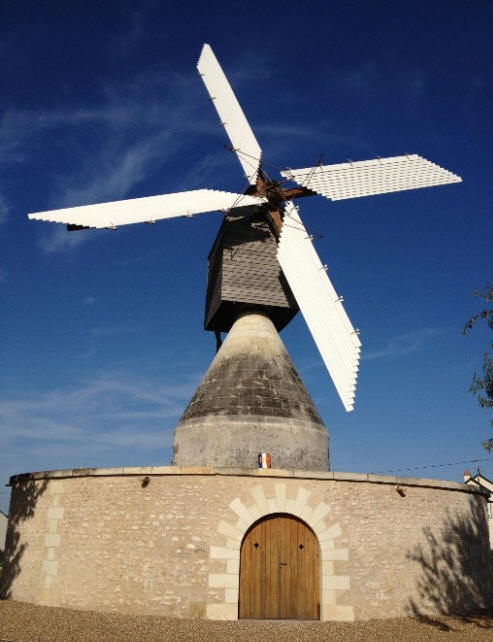 |
  |
